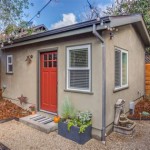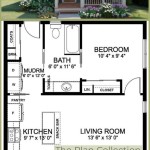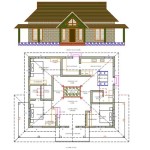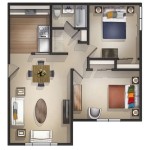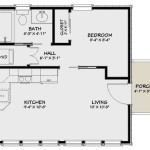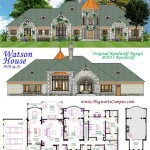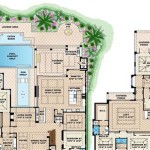Craftsman Style Home Plans With Wrap Around Porch
Craftsman style homes, renowned for their emphasis on handcrafted details, natural materials, and open floor plans, have maintained enduring popularity since their emergence in the early 20th century. The addition of a wrap-around porch to this already appealing architectural style elevates its charm and functionality, creating a welcoming and versatile outdoor space. This article explores the defining characteristics of Craftsman homes with wrap-around porches, examining the architectural elements, design considerations, and the benefits of incorporating this porch style into the overall home plan.
The Craftsman architectural movement, a reaction against the mass-produced and ornate designs of the Victorian era, championed simplicity, functionality, and a connection to nature. Key features include broad, low-pitched roofs with wide eaves, exposed rafters, substantial porch columns, and the use of natural materials such as wood, stone, and brick. Interior spaces are often characterized by open floor plans, built-in cabinetry, wood trim, and a focus on natural light.
The wrap-around porch further enhances these inherent qualities by providing an expansive outdoor living area that seamlessly integrates with the surrounding landscape. It extends the usable living space of the home, offering opportunities for relaxation, entertaining, and enjoying the outdoors. This design element is particularly well-suited to Craftsman homes, as it complements the style's emphasis on natural materials and connection to the environment.
Key Features of Craftsman Style Homes
Craftsman homes possess a distinct visual vocabulary that sets them apart from other architectural styles. Understanding these key features is crucial for appreciating the integration of a wrap-around porch into the overall design. Several elements are fundamental to the Craftsman aesthetic:
Low-Pitched Roofs and Wide Eaves: One of the most recognizable features of Craftsman homes is the roofline. Low-pitched roofs with broad overhanging eaves are designed to provide ample protection from the elements, while also creating a visually appealing horizontal emphasis. The exposed rafters, often left unpainted or stained to showcase the natural wood grain, add to the handcrafted feel.
Substantial Porch Columns: Porch columns are a defining element of Craftsman architecture. These columns are typically thick and tapered, often resting on substantial brick or stone piers. They provide structural support for the porch roof while also adding visual weight and stability to the overall design. The columns are often constructed of wood, reflecting the style's emphasis on natural materials.
Natural Materials: The use of natural materials is paramount in Craftsman architecture. Wood, stone, and brick are commonly used for exterior cladding, trim, and structural elements. The emphasis is on showcasing the inherent beauty of these materials, rather than concealing them with paint or ornamentation. This commitment to natural materials extends to the interior, where wood trim, hardwood floors, and exposed wood beams are frequently incorporated.
Emphasis on Horizontal Lines: Craftsman homes are characterized by a strong horizontal emphasis. This is achieved through the low-pitched rooflines, wide eaves, and the use of horizontal siding. The wrap-around porch further reinforces this horizontal emphasis, creating a sense of groundedness and stability. The horizontal lines contribute to the overall sense of calm and serenity that is often associated with Craftsman architecture.
Exposed Rafter Tails and Decorative Brackets: The details matter in Craftsman design. Exposed rafter tails, the ends of the roof rafters that project beyond the exterior walls, are often left unpainted or stained to showcase the natural wood grain. Decorative brackets, typically made of wood, are often placed beneath the eaves to add visual interest and support. These small details contribute to the overall handcrafted feel of the home.
Designing a Wrap-Around Porch for a Craftsman Home
Integrating a wrap-around porch into a Craftsman home plan requires careful consideration of several design factors. The porch should seamlessly blend with the existing architectural style, while also providing a functional and inviting outdoor space. Proper planning is essential to ensure that the porch complements the overall design and enhances the home's curb appeal.
Scale and Proportion: The scale and proportion of the porch should be carefully considered in relation to the overall size of the house. A porch that is too small may appear insignificant, while a porch that is too large may overwhelm the design. The height of the porch roof, the size and spacing of the columns, and the width of the porch should all be carefully proportioned to create a harmonious and balanced design.
Material Selection: The materials used for the porch should be consistent with the overall Craftsman aesthetic. Wood is the most common material for porch decking, columns, and railings. Natural stone or brick can be used for the porch foundation and column bases. The materials should be durable and weather-resistant, and should be chosen to complement the existing exterior finishes of the house.
Column Design: Porch columns are a prominent feature of the wrap-around porch, and their design should be carefully considered. Tapered columns, often resting on substantial brick or stone piers, are a classic Craftsman detail. The columns should be properly spaced to provide adequate support for the porch roof, while also creating an open and inviting atmosphere. The size and shape of the columns should be proportional to the size of the porch and the overall scale of the house.
Railing Design: The porch railing should be designed to complement the overall Craftsman style. Simple, clean lines are often preferred. Wood railings with square or rectangular balusters are a common choice. The railing should be sturdy and safe, and should comply with local building codes. Metal railings, while less traditional, can also be incorporated into a Craftsman design if they are carefully chosen to complement the overall aesthetic.
Roof Design: The porch roof should be designed to blend seamlessly with the main roof of the house. A low-pitched roof with wide eaves is a common choice. The porch roof should be properly supported by the porch columns, and should provide adequate protection from the elements. The roof material should be consistent with the main roof of the house, and should be chosen for its durability and weather resistance.
Benefits of a Wrap-Around Porch
The addition of a wrap-around porch to a Craftsman home offers numerous benefits, both aesthetic and functional. The porch enhances the home's curb appeal, provides valuable outdoor living space, and improves the overall quality of life for its occupants.
Enhanced Curb Appeal: A wrap-around porch significantly enhances the curb appeal of a Craftsman home. The porch creates a welcoming and inviting atmosphere, and adds visual interest to the exterior of the house. The porch can be decorated with outdoor furniture, potted plants, and other accessories to further enhance its appeal. A well-designed porch can significantly increase the value of the home.
Expanded Outdoor Living Space: The wrap-around porch provides valuable outdoor living space for relaxation and entertaining. The porch can be used for a variety of activities, such as reading, dining, or simply enjoying the outdoors. The porch provides a sheltered space that can be used year-round, regardless of the weather. The expanded living space enhances the quality of life for the home's occupants, providing opportunities for relaxation and social interaction.
Improved Connection to Nature: The wrap-around porch fosters a stronger connection to nature. The porch provides a comfortable and convenient space to enjoy the outdoors, regardless of the weather. The porch can be used to observe wildlife, listen to birdsong, or simply enjoy the fresh air. The connection to nature promotes relaxation and reduces stress, improving the overall well-being of the home's occupants.
Increased Home Value: A well-designed and constructed wrap-around porch can increase the value of a Craftsman home. The porch adds valuable living space, enhances the home's curb appeal, and improves the overall quality of life for its occupants. Potential homebuyers are often drawn to homes with wrap-around porches, as they provide a unique and desirable outdoor living space. The investment in a wrap-around porch can pay dividends in the form of increased home value.
In conclusion, Craftsman style home plans incorporating a wrap-around porch offer a blend of aesthetic appeal and functional benefits. The design considerations, material choices, and architectural details must align to create a harmonious and inviting space that complements the Craftsman aesthetic. The resultant home provides an enhanced connection to the outdoors, increased living space, and improved curb appeal, solidifying the timeless appeal of this architectural style.

Craftsman With Wrap Around Porch 500015vv Architectural Designs House Plans

Craftsman House Plans With Impressive Porches Blog Dreamhomesource Com

Craftsman House Plans With Impressive Porches Blog Dreamhomesource Com
:max_bytes(150000):strip_icc()/HOH_SL1254-d5dcd603b4e042e7852fbb2e93f2e0a5.jpg?strip=all)
13 House Plans With Wrap Around Porches

Plan 500015vv Craftsman With Wrap Around Porch Style House Plans

3 Bedroom Open Floor Plan With Wraparound Porch And Basement
:max_bytes(150000):strip_icc()/RX_1909_SL1821-dd6f62380f214b4fb1e6ebd310c4d535.jpg?strip=all)
13 House Plans With Wrap Around Porches

Country Style House Plan With Wrap Around Porch

Craftsman Style Home Plans House Bungalow Homes

Wrap Around Porch House Plans

